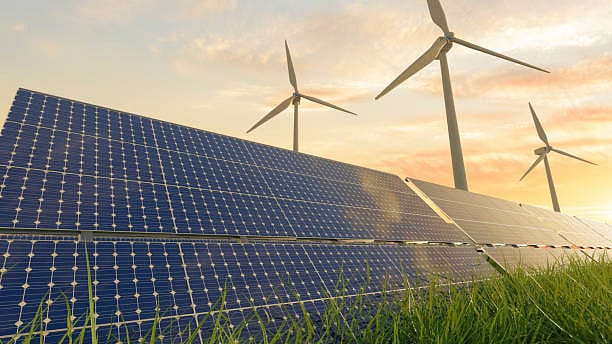India's energy storage moment is now—no more warm-up
ADVERTISEMENT

The Power Grid: Humanity’s Largest, Most Underestimated Machine
Let’s be clear: the electricity grid isn’t just wires and transformers — it’s the beating heart of our economy, the invisible infrastructure behind every light switch, factory, and byte of AI data. It’s the most complex machine humans have ever built. And right now, it’s on the edge of a transformation so big, we’ll look back and call this the decade that redefined power.
Driven by the collision of climate urgency, AI-fuelled demand, electric vehicles, rising incomes, and our hunger for industrial growth, India’s electricity system is being rewritten in real time.
We’ve gone from a coal-obsessed grid in 1991 to a diverse, renewable-fuelled powerhouse in 2025. But the transition is no longer about whether it will happen. It’s about how fast we can scale the new grid reality.
Solar, Wind, and the Brutal Truth: Nature Doesn’t Run on Schedules
Yes, renewables are finally cheap. Thank the global supply chain and India’s smart early policy bets. The price of solar and wind has plummeted, giving India the chance to leapfrog industrialisation through old, dirty energy systems. But here’s the truth:
January 2026
Netflix, which has been in India for a decade, has successfully struck a balance between high-class premium content and pricing that attracts a range of customers. Find out how the U.S. streaming giant evolved in India, plus an exclusive interview with CEO Ted Sarandos. Also read about the Best Investments for 2026, and how rising growth and easing inflation will come in handy for finance minister Nirmala Sitharaman as she prepares Budget 2026.
Sunshine and breeze don’t follow peak hours.
Our current grid is a one-way highway: power flows from plant to plug. That model breaks when the power source is unpredictable. The old tricks — ramping up hydro or peaker plants, or just cutting supply — aren’t enough anymore.
We’re building a 21st-century energy demand profile on a 20th-century supply logic. That’s a disaster in slow motion unless we adapt.
The Missing Link: Energy Storage Is No Longer a ‘Nice to Have’
To survive this energy shift, we need buffers — systems that store electricity when it’s in excess and release it when demand spikes. This isn’t theory anymore.
2025 is the inflection point.
For the first time, battery energy storage in India is commercially viable for grid-connected applications.
A recently commissioned 20 MW/40 MWh project at BSES Rajdhani in Delhi has reached a price point that has offset expensive fossil fuel based electrons with greaner, cheaper ones. Read that again: storedclean energy is cheaper than the average market purchase price during peak hours. That’s the death knell for the old grid model.
And the floodgates have opened: over 20 GWh of energy storage projects have already been announced — and we’re just getting started. These aren’t prototypes. These are the warehouses of energy that will run tomorrow’s India, powering its ambition to achieve 500 GW of non-fossil fuel capacity by 2030 and energy independence by 2047.
Innovation Is Moving — Fast. Can We Keep Up?
Tendering authorities and the private sector aren’t waiting. Creative models like:
· Fixed Dispatch Renewable Energy (FDRE)
· Round-the-Clock (RTC) contracts
· Energy Storage Leasing and Tolling
are already being deployed to make battery storage bankable, scalable, and fast-moving. These aren’t pilot ideas — they’re real-world plays being executed today.
The only question is: will India move fast enough to lead the charge, or lag behind in its own energy revolution?
Make in India or Miss the Moment
Let’s get honest. China owns the battery manufacturing game. But this is a multi-decade transition, and India has a narrow window to catch up.
We don’t need to do it all at once. Start with smart integration and assembly, just like we did in the auto sector. Use sharp policy tools — differential custom duties on components vs. finished BESS units — to kickstart the manufacturing industry. Then level up, piece by piece.
And while we’re at it, let’s not forget: Energy Storage are smart devices with sophisticated control software. We need airtight control systems, local data storage, and rock-solid cybersecurity. The power grid of tomorrow can’t afford to be hacked.
A Global Opportunity — If We Seize It
With global supply chains in flux and the West scrambling for alternatives to China, India is sitting on a golden opportunity:
Become the world’s BESS factory.
Export-ready, plug-and-play battery systems made in India could be our next IT moment. But it won’t happen with half-measures and red tape. We need decisive moves, smart incentives, and ruthless focus.
The world won’t wait. Either we lead — or watch someone else eat our lunch.
Final Word: This Is Not a Drill
India’s energy storage moment is no longer "coming." It’s here. This is our shot to own the future of power. Let’s not squander it with slow bureaucracy, overcautious thinking, or status-quo mindsets.
The grid is changing. The world is watching. And the clock is ticking.
Decarbonization isn't just a policy — it’s a race. India needs to run.
The author of this article is Ayush Misra, co-founder and CEO, AmpereHour Energy.
